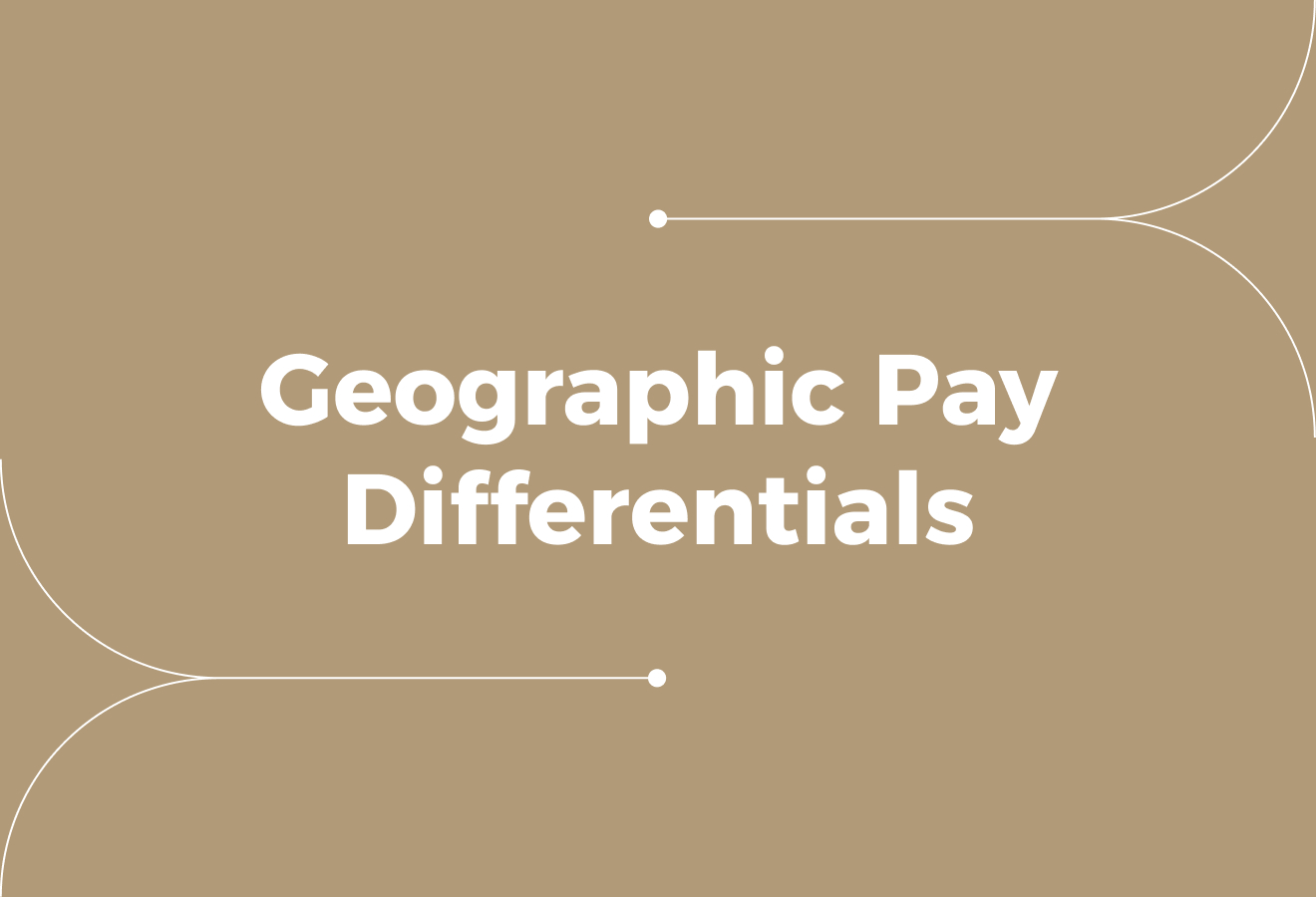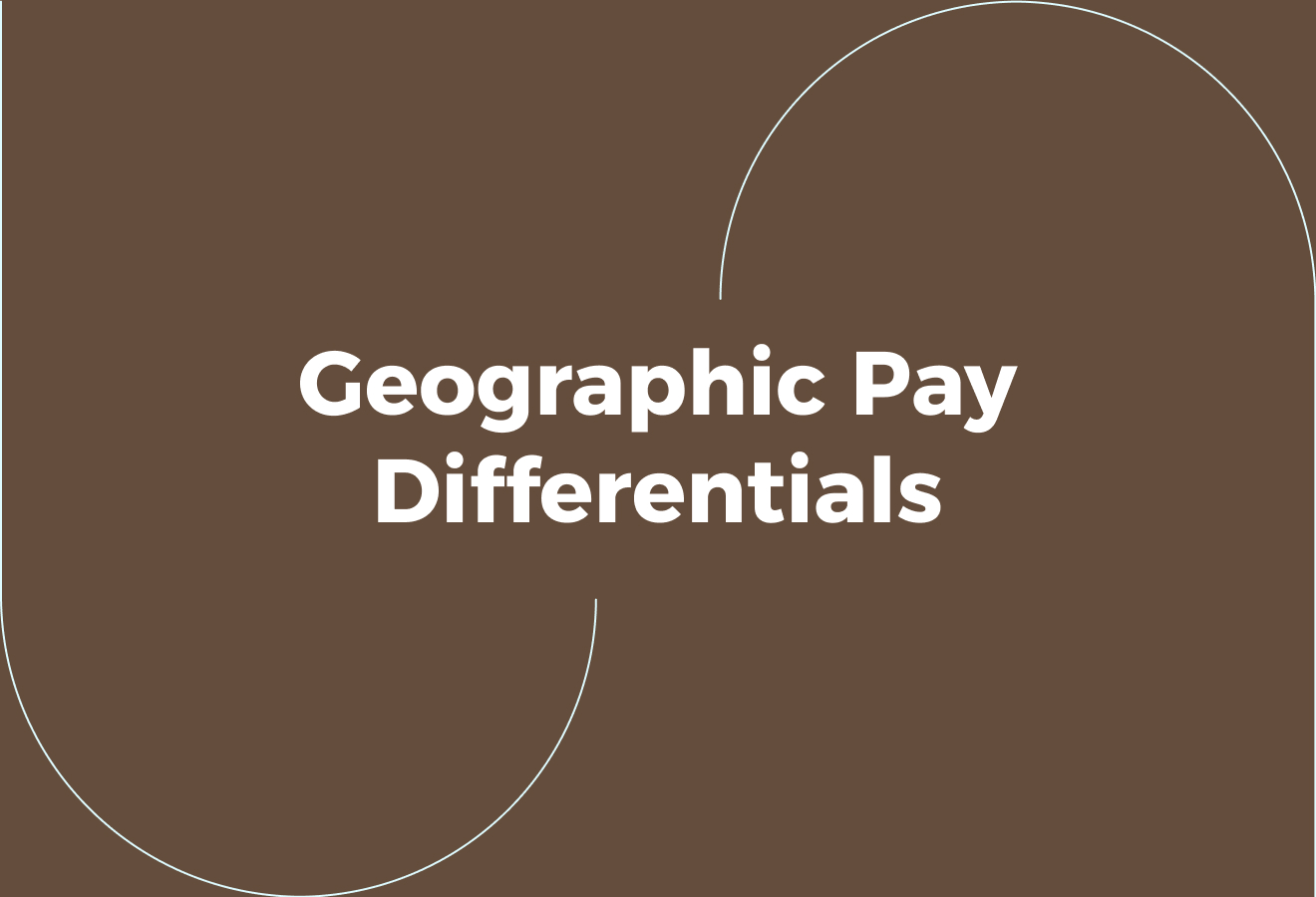Geographic Pay Differentials (Why Location Still Matters in Pay Strategy)

When your company opens a new office in Austin or hires someone who works remotely from Buenos Aires, pay decisions suddenly get tricky. Geographic pay differentials shape how you set salaries, factor in the cost of living, match local market rates, and protect pay equity across regions while supporting recruitment and retention. A well-designed compensation strategy helps balance these factors and ensures consistency across locations. Want to learn how geographic pay differentials work and why location still matters in pay strategy? Use salary benchmarking, cost-of-living adjustments, and regional pay practices to make smarter, fairer offers.
Cercli’s global HR system gathers market data, cost-of-living indices, and pay equity tools in one platform, helping you apply location-based pay adjustments and manage compensation decisions efficiently.
Summary
- Geographic pay differentials can materially affect payroll, with US variations ranging from 5% to 30% by region. This shows that location-based adjustments are an important budget lever. Cercli supports this by centralising market data and location-based adjustments, keeping pay rules consistent and auditable across cities and countries.
- Remote work continues to reshape pay geography. By 2025, around 36% of the global workforce is expected to work remotely, with employers saving an average of about $11,000 per remote worker. This trend pushes organisations to decide whether to standardise or regionalise pay. Cercli’s global HR system helps manage this by automating multi-currency payroll and Employer of Record (EOR) workflows across jurisdictions.
- Weighting data signals correctly is key. A recommended model assigns 50% weight to market benchmark reliability, 20% to statutory burden, 15% to cost of living, 10% to role scarcity, and 5% to recent hiring outcomes. Only about 15% of organisations implemented geographic pay differentials in the past year, suggesting that weighting choices influence the pace of adoption. Cercli’s platform supports this by ingesting market medians, consumer price index (CPI) data, and statutory rates within a governed rule engine.
- Clear approval gates and triggers help prevent policy drift. For example, manager approval might apply to adjustments under 5%; the compensation committee may review those between 5% and 15%; and CFO approval may be required above 15%. Quantitative triggers such as a 10% market shift or a 25% offer rejection rate can prompt review. Cercli’s global HR system helps enforce these gates, record exceptions with expiry dates, and preserve a complete audit trail.
- Measure programme impact through operational KPIs. Track offer acceptance rates by region, six-month retention, and changes in total cost per hire. Maintain a governance cadence, as around 50% of organisations review their differentials annually to keep policies current. Cercli supports this with dashboards that consolidate metrics on offer acceptance, retention, and payroll reconciliation for compensation committees.
- Spreadsheets may feel familiar, but they often fragment at scale. In higher-cost cities, employers may pay up to 30% more than in lower-cost regions, leading to increased reconciliation errors, approval delays, and hidden liabilities. Cercli’s global HR system reduces these issues by centralising rules, automating location-based calculations, and shortening approval cycles while maintaining full compliance records.
What are Geographic Pay Differentials?

Geographic pay differentials are location-based adjustments to base pay that align salaries with:
- Local cost of living
- Labour demand
- Regulatory conditions
They are expressed as percentage uplifts or discounts to a central salary band so that pay remains competitive and auditable across different cities or countries.
How Do Employers Usually Set The Percentage?
Organisations use a mix of cost-of-living indices, local market benchmarking, and internal salary bands to translate local conditions into a numeric adjustment. Benchmarks vary widely. Pave (2025) finds that geographic pay differentials in the United States can range from 5% to 30% across regions, underscoring how material these adjustments can be for total payroll spend.
You then integrate that percentage into job families, job levels, or specific offers so that sourcing and payroll follow the same structure.
Who Has The Authority To Approve These Adjustments?
Some jurisdictions treat location pay as a formal payroll artefact rather than an informal perk. For example, the Office of the New York State Comptroller (2025) defines geographic pay differential as additional compensation that the Director of Classification and Compensation may authorise, subject to approval by the Director of the Budget.
This illustrates how regulation can turn what seems a commercial choice into a controlled budget item. That legal framing matters in multi-country programmes because compliance and auditability become operational requirements rather than optional extras.
How Fragmented Pay Data Undermines Equity And Compliance
Most teams manage location pay through spreadsheets and local rules because it feels familiar and requires no new approvals.
As headcount, remote hires, and cross-border roles increase:
- Those spreadsheets fragment
- Reconciliation takes hours
- Local tax or policy mismatches create unexpected liabilities
Building Scalable Pay Governance For Mena-Based Teams
Cercli’s MENA-localised HR and payroll platform centralises rule sets, automates location-based calculations, and preserves audit trails so that pay decisions scale reliably across borders.
Based in Dubai, Cercli supports organisations operating across the UAE and beyond by offering region-aware compliance and structured payroll governance without unnecessary complexity.
Why Does This Matter For Fairness And Retention?
Pay differentials are not only a cost-control tool; they are a fairness mechanism. If you treat location as invisible, you under- or over-value talent relative to local living standards and market demand, harming retention or inflating budgets.
Think of differentials as a thermostat for a multi-room building: set it by the loudest room and others suffer; set it by a single baseline and some rooms freeze. Using market-referenced benchmarks, transparent rules, and auditable processes reduces grievances and makes compensation defensible.
What Should You Expect Operationally When You Implement Them?
Expect three practical requirements:
- Consistent data feeds for local CPI and market surveys
- Clear governance for who approves exceptions
- Payroll logic that handles currencies, taxes
- Temporary remote work cases
You need automated pipelines to convert market data into:
- Salary bands
- Role-based approval flows
- Payroll validation
This prevents one-off fixes from becoming permanent liabilities.
These are process investments, not ideological ones, and they pay back in fewer mistakes and faster hiring cycles. That simple control point is the hinge for a wider set of trade-offs you will face next, and the consequences are more human than most teams realise.
Why Companies Use Geographic Pay Differentials

Companies use geographic pay differentials to make clear, defensible choices about whom to hire, where to hire them, and how much to pay as they grow across regions. The aim is to turn location into a manageable factor so that talent decisions and budgets stay aligned.
How Does This Shape Talent Strategy?
When you define roles within regional pay bands, hiring becomes structured rather than subjective. Teams can target scarce skills in high-demand cities with premium offers, reserve mid-market roles for lower-cost regions, and design mobility pathways that preserve promotion incentives.
That approach explains why about 20% of companies adjust salaries based on geographic location to stay competitive, according to Geographic Pay Differentials: HR Guide for 2025 (2025), and why pay becomes a deliberate lever rather than an afterthought.
What Compliance And Budget Risks Get Exposed?
Local rules and benefit regimes change the maths. If you treat pay purely as an offer-line item, you risk missing tax withholding differences, statutory contributions, and required benefits that alter the overall cost. In high-cost cities, employers may face significant budget pressure because companies there often offer salaries up to 30% higher than in low-cost regions, per Geographic Pay Differentials.
It’s similar to plumbing in a building: a small leak in one area creates pressure shifts elsewhere, and without proper controls, the whole system becomes more complicated to manage.
Why Spreadsheets Fall Short
Most teams manage rules with spreadsheets because that workflow feels familiar and low-cost. That’s understandable. Spreadsheets are flexible and immediately accessible. But as exceptions grow, approvals scatter, and payroll inputs cross currencies, that familiarity becomes a coordination drag and an audit risk.
Platforms like a global HR system centralise approvals, apply consistent payroll rules, and maintain clear audit trails, shortening review cycles from days to hours while keeping the records required for regulators and finance teams.
Which Metrics Show A Programme Is Actually Working?
Measure the differential’s impact on offer acceptance by region, regional turnover after six months, and the variance in total cost per hire month to month. Track payroll reconciliation errors and audit exceptions as operational KPIs, then compare forecasted versus actual payroll spend at quarter-end.
Set targets that link to hiring velocity and retention so that pay policy adjustments have clear business outcomes, not just theoretical fairness.
Cercli’s Regional Expertise
Headquartered in Dubai, Cercli draws on the UAE’s position as a trusted hub for business and compliance excellence. It is designed for companies in the Middle East that need a flexible, compliant way to manage local and international teams. As a regionally focused global HR platform, it centralises payroll, compliance, and HR processes across the UAE, Saudi Arabia, and the wider MENA region.
Cercli supports multi-currency payroll and employer-of-record services across over 150 countries while managing local requirements such as WPS, GOSI, and DEWS, providing HR teams with a single, auditable source of truth.
That looks tidy on paper; yet a single hidden decision can quietly reshape hiring, budgets, and morale.
Related Reading
- Market-Based Pay Structure
- Compensation Equity Analysis
- What's Competitive Pay
- Compensation and Employee Retention
- Management Incentive Compensation Plan
- Pay Grade Structure Example
How Pay Differentials Are Calculated

Pay differentials are calculated by turning multiple data signals into a single, auditable adjustment applied to base pay, then testing the resulting figure against total employer cost and governance rules.
You use weighted inputs, scenario modelling, and clear approval thresholds so that each adjustment is:
- Defensible
- Repeatable
- Reversible
What Data Should You Weight, And How Do You Assign Weights?
Start with a small, repeatable weighting framework so that decisions are not arbitrary. A practical template might be:
- 50 per cent market benchmark reliability
- 20 per cent statutory and payroll burden
- 15 per cent local living-cost signal, 10 per cent role scarcity
- 5 per cent of recent hiring outcomes
The market benchmark component itself should carry a reliability score tied to sample size and recency, so that a thin local survey automatically reduces your benchmark weight. For context, the Geographic Pay Differentials: HR Guide for 2025 (2025) reports that 15 per cent of organisations implemented geographic pay differentials in the past year, meaning your weighting choices decide whether you join an early wave or remain conservative.
How Do You Model Total Employer Cost Precisely?
Translate the adjusted base pay into a full cost line using a simple formula:
Adjusted Base = Central Band × (1 + Differential)
Total Employer Cost = Adjusted Base + Employer Social Contributions + Mandatory Benefits + Payroll Processing & Compliance Fees + Expected FX Slippage.
Run three scenarios, each covering a 12-month horizon:
- Stable
- Stress (for example, a 5 per cent FX move and a 2 per cent statutory rate rise)
- Upside (faster hiring, lower voluntary turnover)
This sensitivity analysis shows whether a 5 per cent differential is affordable in a volatile currency market or whether it undermines your headcount plan.
Who Should Sign Off, and How Do You Limit Exceptions?
Set clear, percentage-based gates tied to role level and budget owner. For example, manager approval for adjustments under 5 per cent, compensation committee sign-off for 5 to 15 per cent, and CFO and Head of People approval for adjustments above 15 per cent. Each exception should be documented with an expiry date and business case.
Record:
- The decision
- The data snapshot used
- An automatic review date
If a region’s differential remains unchanged for more than 12 months without a market check, trigger a mandatory re-evaluation.
Why Spreadsheets Create Risk
Most teams manage this with spreadsheets because it feels familiar and fast, which makes sense early on.
But spreadsheets fragment when approvals and auditability become important, and that fragmentation creates hidden costs:
- Version conflicts
- Stale inputs
- Slow offer cycles
Solutions like Cercli centralise the rule engine, apply location-specific payroll logic, maintain a permanent audit trail, and automate multi-currency calculations, so teams can shorten approval cycles from days to hours while maintaining complete compliance records.
How Do You Translate A Central Salary Band Into A Local Offer Without Losing Internal Equity?
Use midpoint anchoring, not simple percentage adjustments. Map each job level midpoint to the local market median, then apply the differential only to the range spread from the midpoint to the target offer. This keeps internal promotion pathways intact and prevents senior roles from drifting towards local market extremes.
Run back-to-back checks and prohibit any single offer that pushes the internal compensation ratio beyond a pre-approved tolerance band:
- Internal compensation ratio
- External competitiveness
- Retained promotion premium
What Operational Signals Should Trigger An Out-of-Cycle Change?
Define quantitative triggers:
- A 10 per cent move in local market medians
- A 5 per cent sustained CPI divergence over two quarters
- An offer rejection rate above 25 per cent for a role
- A statutory contribution change greater than one percentage point
When a trigger activates, the system should queue reweighting, rerun scenarios, and route a recommended action to the right approvers within 48 hours.
How Should You Communicate Differentials To Employees?
Be candid about the:
- Rule set
- Data sources
- Review schedule
Publish the policy, show an anonymised comparator (for example, role level versus the local market median), and explain exceptions as time-limited adjustments with measurable review dates.
That transparency reduces grievance work, keeps managers aligned, and turns pay differentials from a mystery into a predictable policy.
Why Continuous Review Matters in Pay Strategy
Think of a differential programme like sail trim on a boat; small adjustments keep speed steady as conditions change, but if you stop checking the instruments, you drift off course.
That control feels adequate now, until a single factor makes it suddenly fragile and urgent.
The Rise of Remote Work and Its Impact on Pay Geography

Remote work has shifted pay geography from a static office anchor to an active market variable, forcing employers to choose where they will compete for talent and where they will manage cost. That choice reshapes recruiting, legal risk, and payroll architecture all at once; the practical question is not whether pay geography matters, but which trade-offs you are prepared to live with.
How Much Does Wider Remote Adoption Change The Labour Market?
Pattern recognition:
- When a meaningful slice of roles can be filled beyond your city limits
- Bargaining power fragments
- Offers stop flowing from a single salary table
According to EasyStaff (2025), 36% of the global workforce is expected to be working remotely, a shift that expands talent pools but also forces employers to decide whether to standardise pay, regionalise it, or use role-level exceptions.
That figure matters because it turns what were once local hiring decisions into cross-border choices with:
- Payroll, Tax
- Benefits consequences
Why Are Companies Suddenly Willing To Hire Outside Their Own Markets?
Constraint-based insight: cost signals change hiring calculus. Companies that can save on facilities and operating spend will look to capture those savings through hiring choices when quality is comparable.
EasyStaff (2025) reports companies are saving an average of $11,000 per year for each remote worker, which explains the incentive to source talent in lower-cost regions or to reclassify work as contractor engagements.
That money does not drop out of the air;
- It alters offer thresholds
- Creates headline savings for finance
- Shifts long-term decisions about where to place strategic functions
What Operational Risks Rise As Pay Geography Loosens?
Problem-first:
- Legal classification
- Statutory contributions
- Cross-border payroll logistics become primary risk vectors
When you hire a contractor in one country, an employee in another, and keep your HQ payroll in a third, you face:
- Misclassification exposure
- Unexpected employer social contributions
- Currency routing complexity that can erase nominal savings
For MENA employers, this is compounded by local compliance windows, labour law asymmetries, and payroll systems that treat location as a required field rather than a preference.
Most Teams Keep Doing What Feels Familiar, Why Does That Break At Scale?
Most teams build remote hiring policies on office-era habits, because those rules are familiar and simple to explain.
As headcount and jurisdictional variety grow, that pattern creates:
- Slow approvals
- Hidden employer cost
- Fractured audit trails
Solutions like global HR systems centralise compliance logic, automate multicurrency payroll and Employer of Record workflows, and preserve the audit record, reducing the friction that turns hiring momentum into a month-long administrative backlog.
How Do You Translate These Pressures Into Durable Policy Choices?
Specific experience: test policy changes on a narrow set of roles first, then expand.
For example, run a three-month pilot for non-client-facing engineering roles with:
- Capped regional differentials
- Time-limited contractor conversions
- Mandatory 90-day performance triggers tied to a pay-review clause
Track outcomes that matter to decisions you will actually make:
- Offer acceptance lift in target markets
- Change in time-to-fill for scarce skills
- The net employer cost after statutory contributions and FX hedging
Treat each pilot as a data snapshot that must be revalidated before wider rollout.
What Subtle Metrics And Signals Tell You A Policy Is Failing?
Confident stance: watch for divergence between headline savings and real cost. If payroll savings appear but benefit gaps lead to higher turnover among remote hires, you have a hidden trade-off. If local regulators begin audit activity, the cost of retroactive liabilities can exceed any short-term savings.
Think in terms of directional indicators, not absolutes:
- Rising grievance incidents for pay comparators
- Increasing use of contractors for core work
- A steady stream of relocation requests
These are all signals that policy needs tightening or more transparent communication.
Building Resilience into Cross-Border Payroll Systems
Cercli is designed for companies operating across the UAE, Saudi Arabia and MENA that must make these:
- Trade-offs with confidence
- Offering a regional
- Compliant
- An auditable way to manage pay
- Contracts and payroll across multiple jurisdictions
For teams that want fewer surprises, platforms such as global HR systems centralise compliance-by-default rules, multicurrency payroll and Employer of Record services so you can scale hiring without losing the audit trail. That decision looks manageable now, until one migration or audit forces a hard reckoning you did not expect.
Related Reading
- Compensation Review Process
- Withholding Compliance Program
- Pay for Performance Philosophy
- Compensation for Remote Employees
- Typical Equity for Startup Employees
- International Compensation and Benefits
6 Best Practices for Managing Geographic Pay Differentials

Geographic pay differentials work when they are treated as governed policies, not one-off decisions.
Apply precise data controls, predictable review schedules, and consistent manager communication so pay remains:
- Fair
- Defensible
- Aligned with business goals
1. Data-Driven Decision-Making
When adjustments are tied to reliable data sources, recruiters can negotiate in line with policy, not emotion. Start by defining your key data sources, how often they will be updated, and the minimum sample size required for any market benchmark you accept.
Before the data is used in payroll, build:
- A simple data quality score that records recency
- Sample size
- Geographic coverage, and make that score a requirement
Combine market medians, local CPI, statutory contribution rates, and offer-acceptance data into a single weekly update. Automate alerts when a key input moves outside your tolerance range. Keep versioned records of every dataset used for an approved differential so finance and compliance can reproduce calculations later.
2. Transparent Communication
Employees want three things, in this order:
- Clarity about the rule
- Evidence that it was applied fairly
- Clear path to question the decision
Publish a concise policy, then provide a one-page explainer for managers outlining what the differential is, why it exists, how it affects total compensation, and which data was used. Train managers to lead with the rule, not with negotiation.
When someone questions an offer, show:
- The data snapshot used at the time
- Explain any temporary exceptions
- Outline the formal appeal route with clear timelines
3. Flexibility in Implementation
Strict rules work when context is stable, but some documented exceptions are necessary for talent scarcity, relocations, or strategic hires. Limit these exceptions to fixed windows, require a business case, and set automatic expiry dates to prevent policy drift.
Use role-level ceilings for differentials and check comp ratios before approving exceptions. Record the impact on internal equity and run quarterly reconciliations to prevent long-term imbalance.
Streamlining Regional Payroll and Compliance Workflows
Platforms like Cercli, with MENA-specific payroll and HR systems, built-in compliance, and multi-country support, help teams move from ad hoc exceptions to structured approval workflows, speeding up decision-making while preserving audit trails.
4. Regular Review and Adjustment
Regular reviews are more effective than reactive updates. Around 50% of organisations review their geographic pay differential practices annually, according to Culpepper & Associates (2009). Use this as a baseline, but adjust it based on market volatility and hiring pressure.
Run a short, repeatable checklist each cycle:
- Confirm data sources and their quality scores
- Rerun total employer cost scenarios, including statutory changes and foreign exchange variations
- Compare offer acceptance and retention by region, and publish any proposed policy shifts with an impact statement for finance
Make review decisions events, not meetings; require:
- Written approvals
- Dated datasets
- Rollback triggers for any material change
5. Consider Total Compensation
Base salary is only part of the picture. Local statutory benefits, employer social charges, annual leave entitlements, and equity treatment all affect total compensation. Map total employer costs by location and compare the complete package, not just salary, when assessing competitiveness or savings.
Where local statutory benefits replace global benefits, provide an equivalent allowance or enhance another element of the package to maintain fairness. For equity, consider adjusted grant sizes or vesting terms to ensure consistency across jurisdictions. Track employee feedback on perceived fairness after any change.
6. Integrate with Overall Compensation Strategy
Differentials should align with job levels, promotion structures, and comp-ratio rules, rather than operating in isolation. Embed local adjustments into job profiles so promotions, merit increases, and market reviews follow the same logic.
Measure success through offer acceptance by:
- Region, six-month attrition
- Internal comp-ratio variance
- Payroll reconciliation errors
- The number of exceptions per quarter
Present these metrics to the compensation committee with thresholds that trigger policy reviews or regional hiring freezes. That steady governance may seem adequate until one operational test reveals whether your rules are truly enforceable.
Related Reading
- Solutions for Equal Pay
- Performance Incentive Plan
- Typical Equity for Startup Employees
- Compensation Communication
- Compensation Planning Tools
- International Compensation and Benefits
- Enterprise Compensation Management
- Market Pricing Compensation
Book a Demonstration to Speak with Our Team About Our Global HR System
When regional pay, threaded approvals, and cross-border payroll delay hiring cycles and month-end reconciliation, they slow recruitment and increase the risk of costly errors. Cercli helps MENA employers manage local and international teams within a compliant, auditable system.
It shortens:
- Approval cycles
- Maintains payroll accuracy across jurisdictions
- Allows teams to focus on compensation strategy










